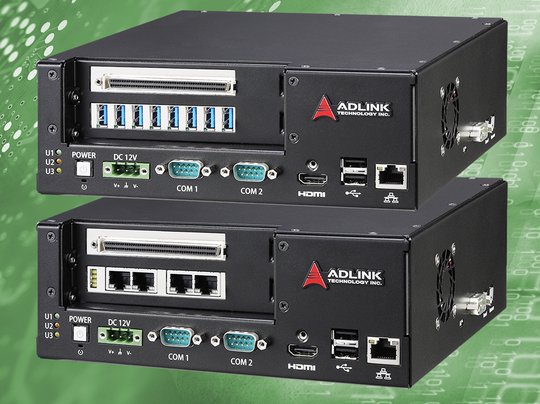EOS-J: Image processing with Jetson TX2 and Nvidia GPU

With the Adlink EOS-J vision system, Acceed introduces a fully new industrial image processing system for “on the edge” (edge computing) use. Developed for Smart Manufacturing, vision systems form the basis for increasing productivity, quality and efficiency. Since the manufacturer Adlink sealed its collaboration with Nvidia as a Jetson Preferred Partner last year, several specialised controllers and systems with high processing power for AI applications and machine learning have already been developed. These also include the EOS-J with its integrated Jetson TX2 chip and optionally four GigE or USB 3.0 interfaces for connecting cameras or frame grabbers.
Compared with the so often preferred cloud computing, edge computing is often the more efficient architecture in industrial environments, because the AI decisions must be taken directly at the machine, the robot or the autonomous vehicle, in other words “on the edge”. Dependent on the intended use, data communication with the cloud is less appropriate. Current development trends such as autonomous driving and robotics applications demonstrate this clearly for the topic of vision computing. In both cases, “seeing” and “recognising” are the most important prerequisites for fast on-site decisions. Machine learning and deep learning as processes optimise quality control with visual inspection, classified errors and enable predictions and trend developments during machine diagnosis.
The two models for the new vision system EOS-J now introduced by Acceed only differ with their respective four type GigE or USB 3.0 camera ports. An integrated Jetson TX2 chip is the core element of the EOS-J, which forms a compact system together with the cameras or frame grabbers and the 32 isolated IO interfaces in accordance with industrial requirements, developed for use in edge computing.
The prerequisite for vision computing is the fast, efficient processing of image data with a correspondingly highly performant graphics processor (GPU). The EOD-J is equipped with a Quadro GPU with pascal architecture from Nvidia. The Cortex-A57 processors from ARM 256 CUDA cores support robust deep learning and inference applications. Therefore, the system is prepared for the requirements as, for example, formulated for error inspection or object classification in manufacturing environments.
The development of application-specific image processing solutions is simplified using neuronal models, optimised using tools from Nvidia (Digits or TensorRT). Such developments can be directly applied on the EOS-J. A gigabit Ethernet connection and two communication ports as well as an HDMI output support integration in the field. The operating system Ubuntu is designated.
